by Deep Green Resistance News Service | Aug 28, 2012 | Colonialism & Conquest, Indigenous Autonomy
By Agence France-Presse
Brazil’s Supreme Court has approved the resumption of work on the huge Belo Monte dam in the Amazon, which was halted earlier this month after protests from indigenous groups.
The preliminary ruling on Monday overturns an earlier ruling that ordered construction of the dam across the Xingu River, a tributary of the Amazon, to be stopped until indigenous peoples can testify before Congress.
However, the decision by Supreme Court President Carlos Ayres Britto could be revised when the court examines the case further, its website said.
The dam, expected to produce 11,000 megawatts of electricity, would be the third-biggest in the world, after China’s Three Gorges facility and Brazil’s Itaipu dam in the south.
A regional federal court, in the earlier ruling, had noted that when Congress approved the project in 2005, it called for an environmental impact study after the start of the work.
By law, the native communities had the right to air their views in Congress on the basis of the study, but this was not done, the court said.
Work on the dam began a year ago, despite fierce opposition from local residents and green activists.
Indigenous groups fear the dam will harm their way of life while environmentalists have warned of deforestation, greenhouse gas emissions and irreparable damage to the ecosystem.
“Avatar” director James Cameron and actress Sigourney Weaver have given their backing to dam opponents, drawing parallels with the natives-versus-exploiters storyline of their blockbuster Hollywood movie.
Belo Monte is expected to flood an area of 500 square kilometers (200 square miles) along the Xingu, and displace 16,000 people, according to the government. Some NGOs estimate that 40,000 people would be displaced.
From Yahoo! News:

by Deep Green Resistance News Service | Aug 26, 2012 | Colonialism & Conquest, Indigenous Autonomy, Obstruction & Occupation
By J. G. / Deep Green Resistance Great Plains
Women of the Oglala Lakota nation along with activists from Deep Green Resistance, AIM Grassroots, Native Youth Movement, Un-Occupy Albuquerque, Occupy Lincoln, and Rocky Mountain Peace and Justice Center took part in a march from Billy Mills Hall in Pine Ridge into Whiteclay to protest against the predatory liquor industry present there.
Whiteclay has a population of 14, yet 4 liquor stores in the town sell 12,500 cans of beer each day. The stores have been documented repeatedly selling to bootleggers, intoxicated people, minors, and trading beer for sexual favors.
“For over 100 years the women of the Oglala Lakota nation have been dealing with an attack on the mind body and spirit of their relatives”, says Olowan Martinez who is a main organizer of the event and resident of Pine Ridge. “The Oglala have been silenced through chemical warfare waged by the corporations who are out to exploit and make a profit off of the suffering and misery of our people. The time has come to end this suffering by any means necessary.”
Debra White Plume, a Lakota activist and resident of Pine Ridge who spoke at the event proclaimed, “A sober Indian is a dangerous Indian. We have to send a message to Nebraska and its citizens that we are not going to tolerate business as usual. This is the Women’s Day of Peace but that peace will soon be over”.
After the march and speeches members of Deep Green Resistance locked down and blockaded the road into Whiteclay.
Less than a half hour after the lockdown began a police officer rolled down their window and indiscriminately pepper sprayed into a crowd. Up to 12 people were pepper sprayed including the 10 year old son of a Lakota woman who helped organize the march. Also, an elder Lakota woman, Helen Red Feather, reported having her leg hit by a police car in motion. Medics with the protest treated pepper spray injuries.
At 7:39, the five activists who participated in the lock down were hauled off in a horse trailer to the Sheridan County jail in Rushville. They have since been released on their own recognizance.
Today, justice is far from complete, since Whiteclay continues to enable and enact the destruction of the Oglala Lakota and the people of Pine Ridge. The continued subjugation of the Oglala Lakota of the Pine Ridge Reservation will not end as long as the liquor stores in Whiteclay continue to operate.
Chants of “As long as it takes!” began by those locked down and the people standing with them in the crowd at the beginning of the lockdown. The struggle continues.
For context behind the Women’s March and Day of Peace, as well as pictures from the action, please see http://dgrnewsservice.org/2012/08/26/womens-day-of-peace-action-in-white-clay/
Want to help support this action? Please see http://deepgreenresistance.org/feature-help-support-indigenous-solidarity-in-whiteclay/
Para leer este articulo en español, vea: http://dgrnewsservice.org/2012/08/29/la-marcha-de-mujeres-y-el-dia-de-paz-resulto-ser-violente-manifestantes-detenidos/
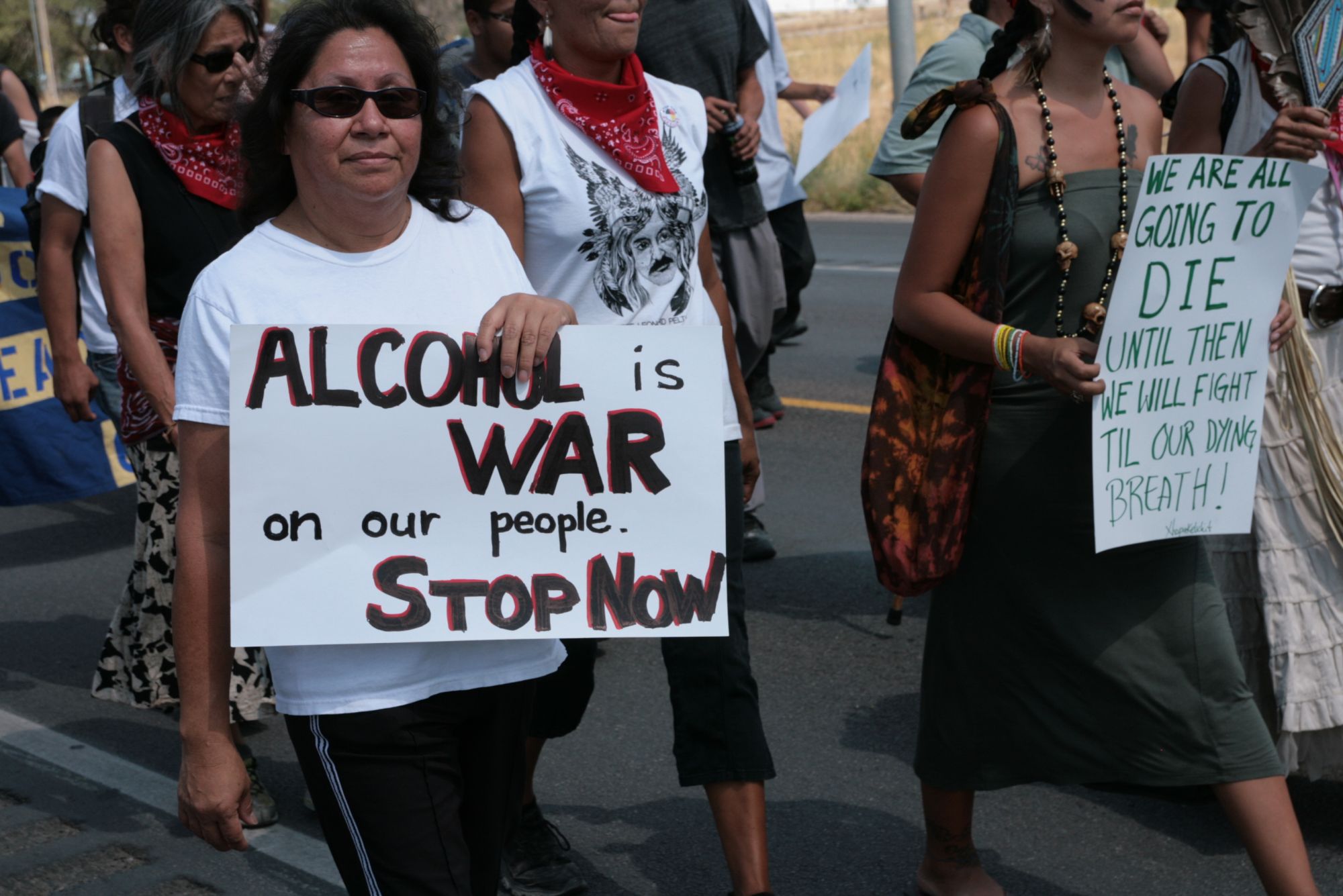
by Deep Green Resistance News Service | Aug 26, 2012 | Colonialism & Conquest, Indigenous Autonomy, Obstruction & Occupation
Whiteclay is an unincorporated village with a population of 14 people in northwest Nebraska. The town sits on the border of the Pine Ridge Indian Reservation, home to the Oglala Lakota (also known as the Oglala Sioux Tribe).
Whiteclay lies on disputed land, merely 200 feet from the official reservation border and less than 3 miles from the center of Pine Ridge, South Dakota, the largest town on the reservation.
Sale and possession of alcoholic beverages on the Pine Ridge is prohibited under tribal law. Except for a brief experiment with on-reservation liquor sales in the early 1970s, this prohibition has been in effect since the reservation lands were created.
Whiteclay has four off-sale beer stores licensed by the State of Nebraska which sell the equivalent of 4.5 million 12-ounce cans of beer annually (12,500 cans per day), mostly to the Oglalas living on Pine Ridge. These retailers routinely violate Nebraska liquor law by selling beer to minors and intoxicated persons, knowingly selling to bootleggers who resell the beer on the reservation, permitting on-premise consumption of beer in violation of restrictions placed on off-sale-only licenses, and exchanging beer for sexual favors. The vast majority of those who purchase beer in Whiteclay have in fact no legal place to consume it, since possession and consumption of alcoholic beverages on the Pine Ridge Reservation remain illegal under tribal law. Many people have died in the streets due to exposure, as the state of Nebraska fails to uphold state law or police Whiteclay. As long as the liquor stores in Whiteclay remains in business, the genocide of the Oglala Lakota people will continue.
Tribal activists of the Strong Heart Warrior Society have conducted annual blockades since 1999, trying to intercept alcohol and drugs being brought into the reservation. In June 2006 tribal activists protested beer sales by blockading the road from Pine Ridge to Whiteclay and confiscating beer bought in Whiteclay. These activists hoped to prevent bootlegging and illegal sales on the reservation. On June 9th of this year, young Lakota activists and their non-native allies held a blockade of the highway leading into Whiteclay, and gained concessions from law enforcement.
In solidarity with the Oglala Lakota people, members of Deep Green Resistance are assisting an action now to shut down the bars in Whiteclay forever.
Updates on action:
Sun. August 26, 2012 (All times MDT)
As of 10:00 PM: Police and firefighters unable to unlock the blockaders once at the jail. The five released without bail after agreeing to unlock themselves.
7:59 PM: Tribal police have come into Nebraska to block support to the folks on lockdown. Nebraska State Patrol has brought in a trailer and carried the lockdown, as a unit, onto the trailer (one person may have sustained injuries due to this police maneuver). They are now being transported to the jail. They are still locked together. Stay tuned for updates on the protestors’ status and information on how to help!
6:22 PM: Police are bringing in a livestock trailer to attempt to move the blockade as a unit to a different location. They have threatened the blockaders with felony charges. Blockaders have decided to hold their ground. This is what resistance looks like.
5:30 PM: Police have threatened to arrest another protester.
4:20 PM: There’s a line of cops, a line of warriors, and a line of blockaders. There’s a huge banner that says “Honor the Treaties”. Lakota people are chanting and drumming.
4:00 PM: All four bars in Whiteclay have been shut down. Two arrests have been made. Police have issued an ultimatum that all those locked down in Whiteclay must walk back to the reservation or they will be arrested.

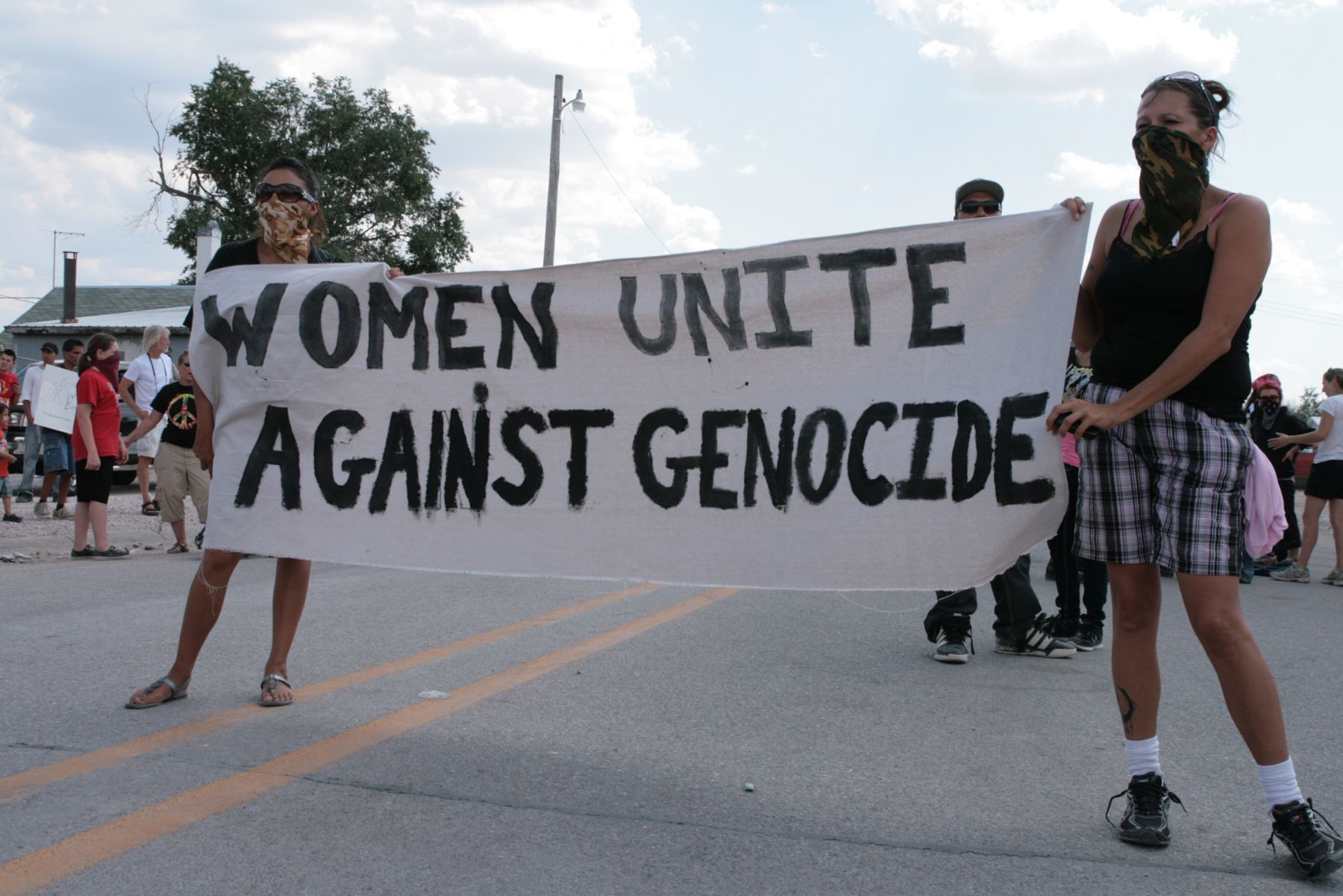
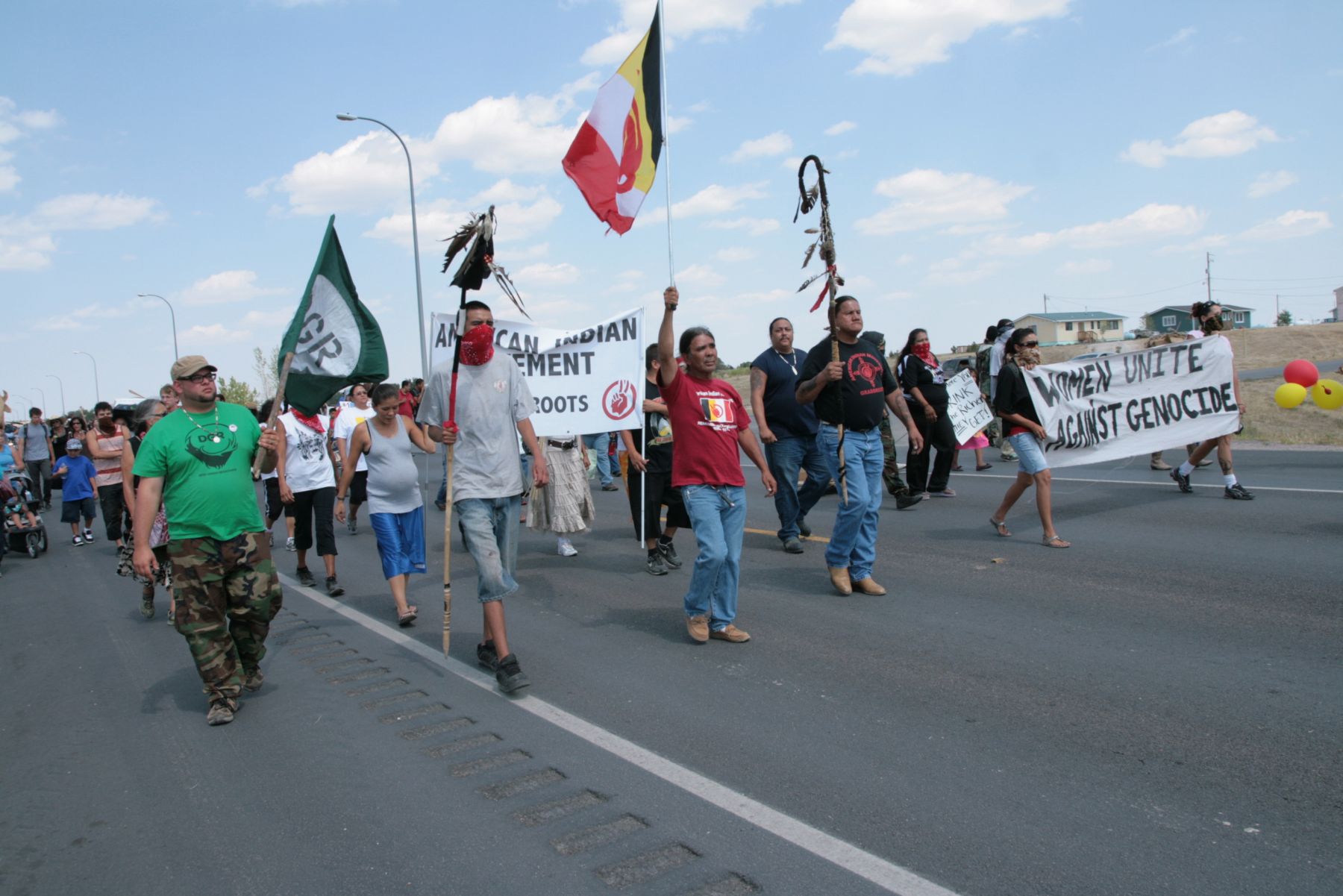



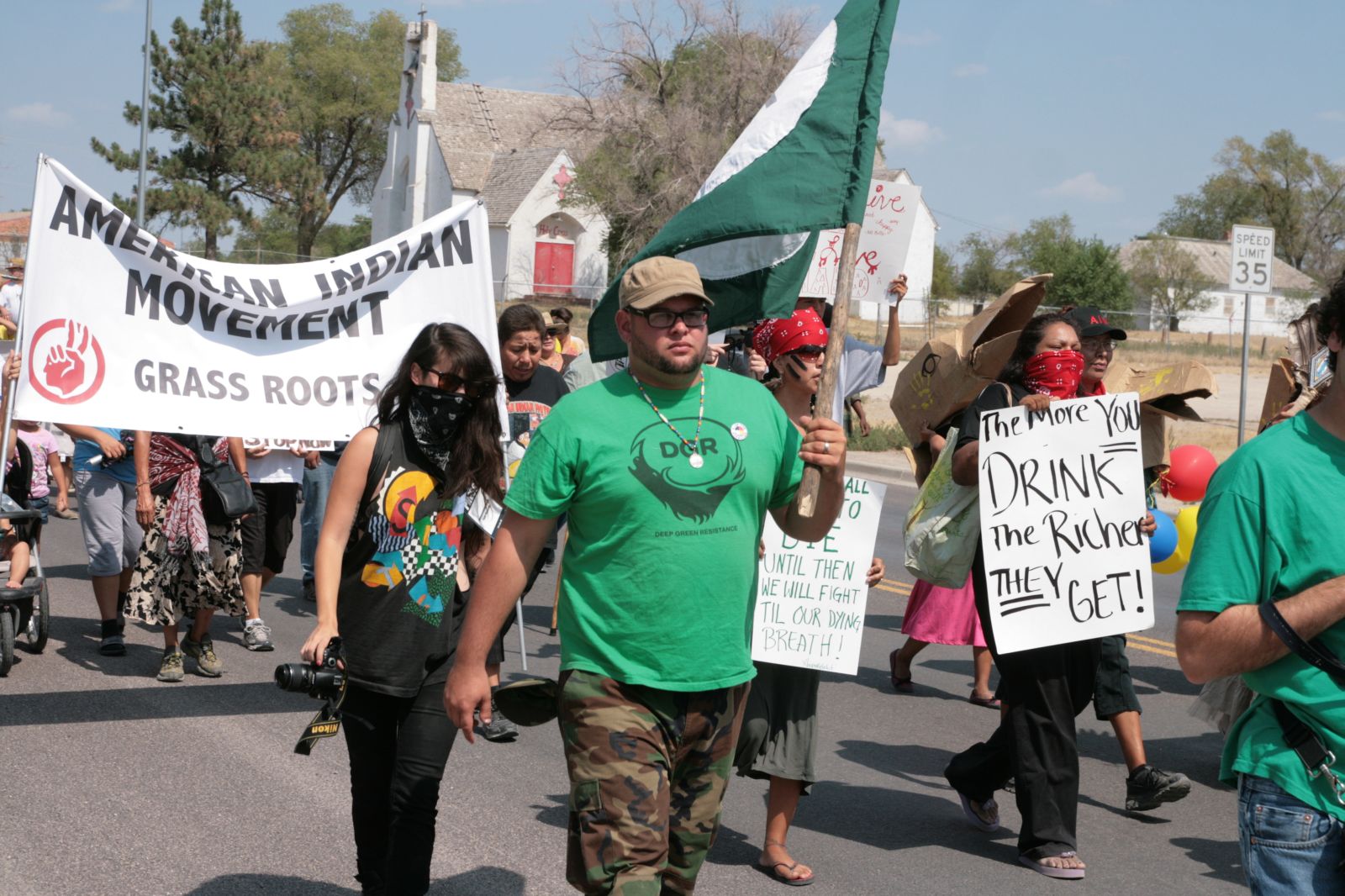
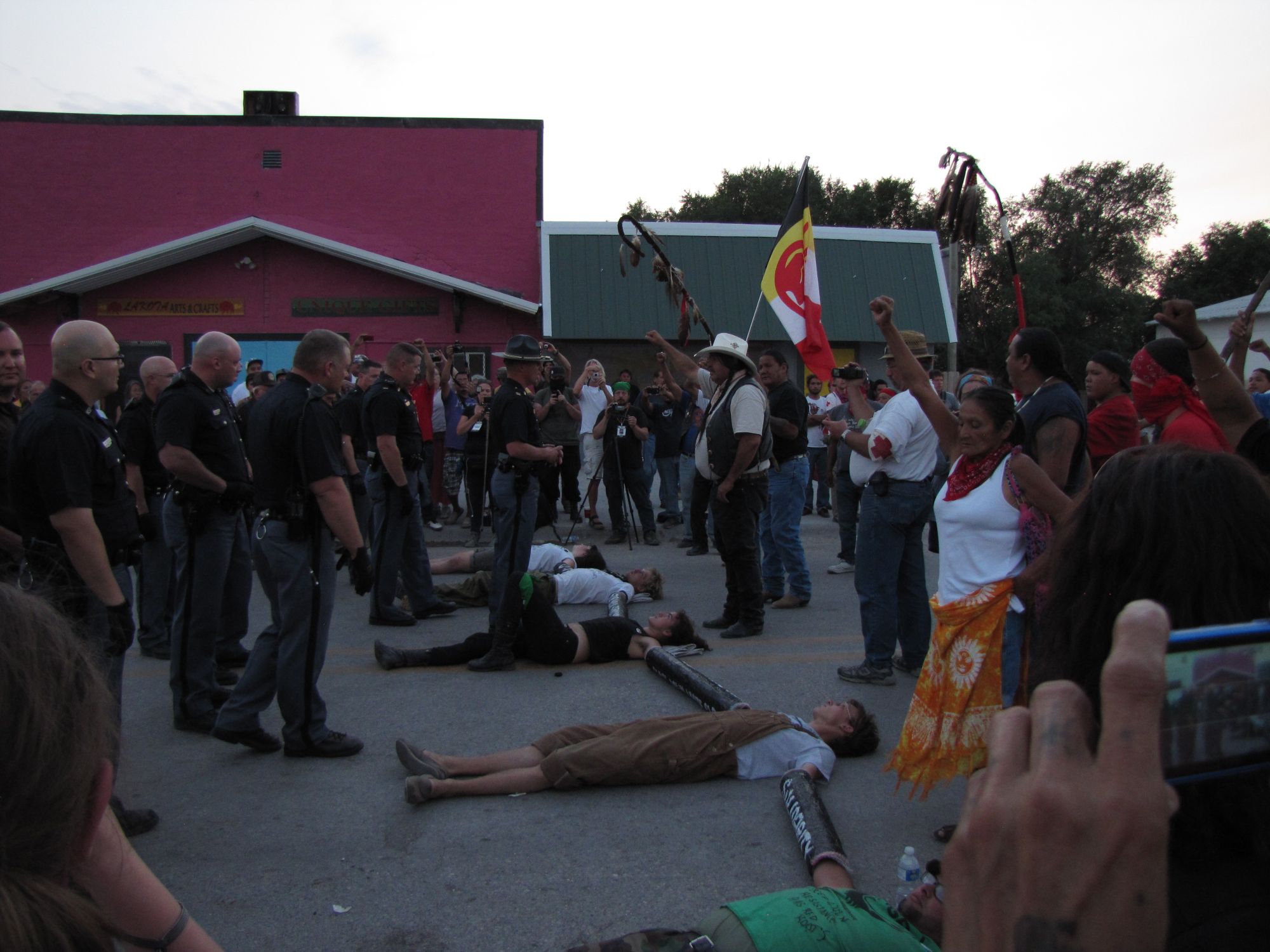

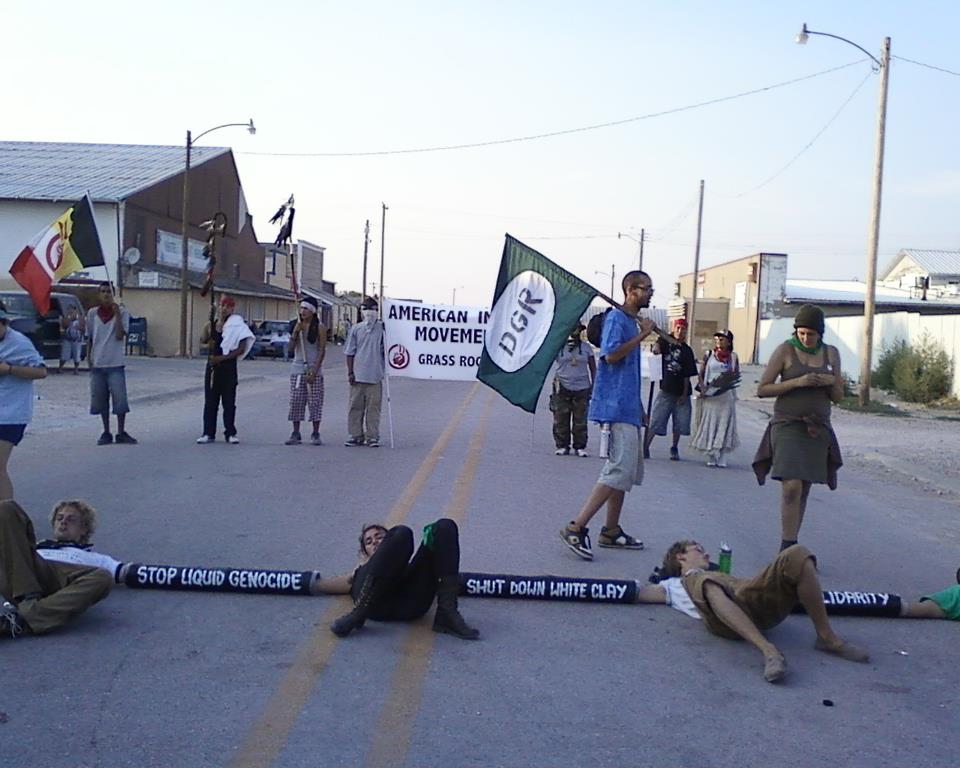
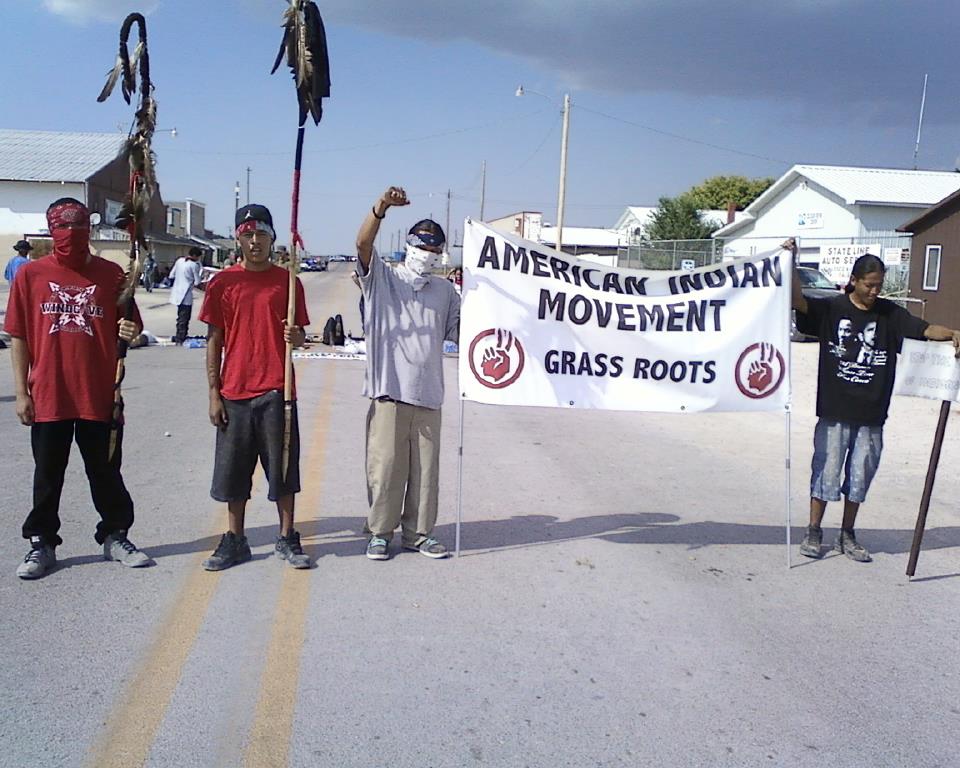




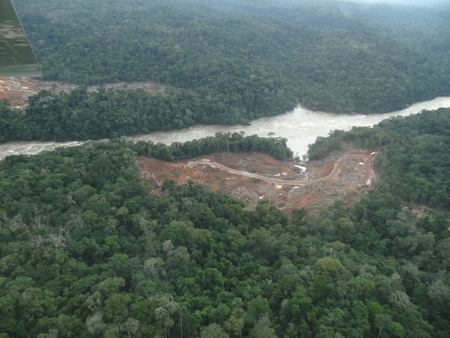
by Deep Green Resistance News Service | Aug 26, 2012 | Biodiversity & Habitat Destruction, Colonialism & Conquest, Indigenous Autonomy, Lobbying
By Fabiola Ortiz / Inter Press Service
The Sete Quedas or “seven waterfalls” on the Teles Pires River, which runs through the Amazon rainforest states of Mato Grosso and Pará in central Brazil, are a spiritual oasis venerated by several indigenous groups.
But the 20-metre-high rocky falls are to be covered by a reservoir created by a hydroelectric dam that is to flood an area of 95 square km.
“It’s a sacred area, our creator and mother. And the ‘pajé’ (shaman) says it is where the fish lay their eggs,” João Kayabi, 52, told IPS by phone from the area. He is the chief of Kururuzinho village, home to 106 members of the Kayabi community, who speak a Tupí-Guaraní language.
For the Kayabi, the area around Sete Quedas must be left untouched, because it is the dwelling of a god who is responsible for the natural balance.
“It will be left underwater, and will only be a memory. We are trying to keep that from happening,” Kayabi said.
Sete Quedas is also sacred to two other indigenous communities: the Apiaká and the Mundurukú. For the latter, the falls are “the mother of fish” and the dwelling-place of their ancestors.
“The Mundurukú say the river is going to dry up, there will be a shortage of food, and the fish will vanish. I hope that isn’t so,” Kayabi said.
Studies on the biodiversity in that stretch of the river, carried out by Brazil’s Energy Research Company (EPE), which conducts research for the Ministry of Mines and Energy, have identified nearly 700 plant species and more than 200 species of fish, such as the spotted sorubim (Pseudoplatystoma corruscans) catfish, the common dolphinfish (Coryphaena hippurus), and the jau (Zungaro zungaro) catfish.
The Teles Pires has the reputation of being one of the world’s best rivers for fishing.
In the indigenous territory where João Kayabi’s village is located, nearly 300 people make a living from hunting, fishing and harvesting fruit.
“Up to now, our land has provided for us sufficiently. But we are concerned about what will happen in the future, and whether food will be scarce,” said the chief, a father of seven. “I’m worried about my children; I don’t know what will become of their lives.”
The Teles Pires plant will have a generating capacity of 1,820 MW. But the Companhia Hidrelétrica Teles Pires, the company that was granted the concession for building the dam, is fighting a judicial battle to be able to finish construction.
The project collides with the beliefs, customs and traditions of the Kayabi, Mundurukú and Apiaká Indians (a combined total of 12,000 people), said indigenous rights lawyer Juliana de Paula Batista, who advises native organisations in Brazil’s southwest Amazon region.
The case has been winding its way through the courts. In early August, a regional federal court ordered suspension of construction of the dam. But the attorney general’s office and Brazil’s environmental protection agency IBAMA appealed, and the suspension was lifted on Aug. 14.
“The natural resources that are indispensable for indigenous people to sustain their lifestyle and culture are being plundered,” Batista told IPS.
Early this year, the office of the public prosecutor brought a civil lawsuit to revoke the environmental license granted by IBAMA in August 2011 and bring construction to an immediate halt.
According to Batista, the environmental licensing process is flawed. “At no time has the magnitude of the impact on indigenous lands been fully understood.”
“The dam endangers fish stocks, the sacred site, water quality, rare and endemic species, vegetation in general, and hunting,” the lawyer said.
Although the tribes will not have to be relocated, they are afraid to remain in their villages “because in case of accidents, such as a break in the dam, the water would carry them away,” Batista said.
The Kayabi villages are only 50 km from the dam.
“There is no solution when it’s a government plan, we have no way to fight this,” Kayabi said. “The only way is to seek support and guidance. The dam will be built, and we are the ones who will be hurt by it, we could lose our rights.”
One of the irregularities noted by the office of the public prosecutor was the company’s failure to consult with the affected indigenous communities prior to the start of construction, as required by law. In March, work on the dam had already been suspended in response to the prosecutors’ request.
Read more from Inter Press Service: http://www.ipsnews.net/2012/08/hydropower-dam-to-flood-sacred-amazon-indigenous-site/
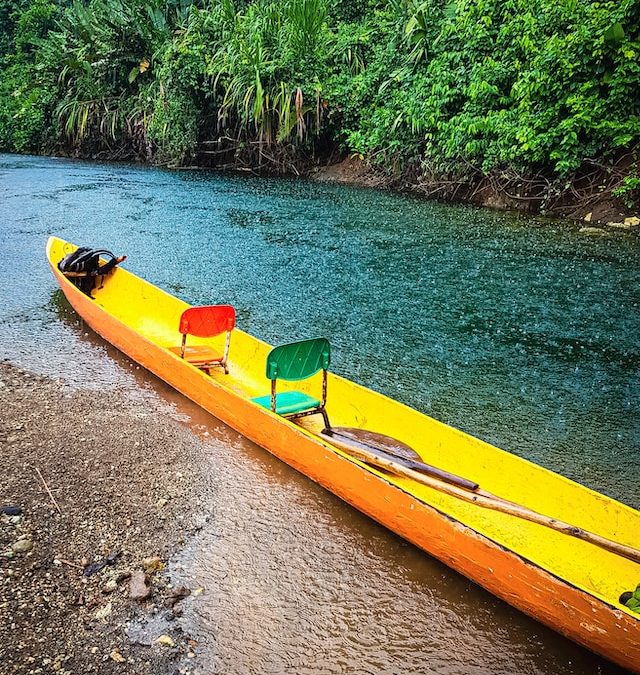
by Deep Green Resistance News Service | Aug 17, 2012 | Indigenous Autonomy, Mining & Drilling, NEWS
By Mongabay
Colombia’s move last week to begin granting new mining concessions across 17.6 million hectares has raised concerns about the potential environmental impacts of a new mining boom across the country.
Colombia’s rich mineral deposits have long been eyed by investors, but civil conflict limited extraction to secure areas until the early to mid 2000s. With the decline in violence in recent years, mining projects in the country have mushroomed, including a surge in unlicensed and unregulated wildcat mines — the National Mining Agency said yesterday that a census for 2010-2011 found that 73 percent of mining operations lack proper title.
But with the influx of miners, there have been rising complaints about environmental damage. Earlier this month environmentalists held demonstrations demanding stronger safeguards in a new mining code that will be submitted to Congress next year. Meanwhile indigenous groups have been reporting conflict with both large mining companies and small-scale miners for years.
The Colombian government asserts that despite opening vast areas for mining, including regions renowned for their high levels of biodiversity, the new mining regulation will limit some of the worst damage seen in recent years by formalizing small-scale miners. It says the new mining code will prohibit mining in protected areas and sensitive ecosystems.
Environmentalists aren’t so sure. According to Catherine Gamba-Trimiño, an independent environmental consultant, mining titles and environmental licenses already granted in protected areas would be allowed to stand, while lower-level protected areas, like civil society nature reserves and municipal parks wouldn’t be off-limits.”Governmental efforts to plan and organize development and extractive activities are applauded,” Gamba-Trimiño told mongabay.com. “However, asking Colombian society to pay the price for the environmental licenses already granted in strategic ecosystems such as paramos, instead of perhaps indemnifying companies and revoking former licenses, is not fair.”
Gamba-Trimiño added that indigenous communities — which control large swathes of Colombia, including areas being targeted for mining — may also lose out under the new rules.
“Companies are obliged to consult only with Indigenous and Afro-Colombians before starting operations in their lands, but the Mining and Energy Minister has been clear at saying ‘they have no veto power.'”
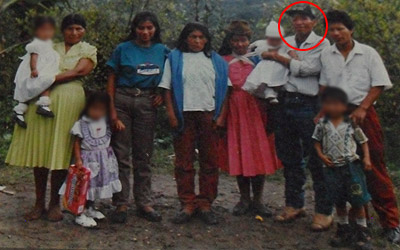
by Deep Green Resistance News Service | Aug 17, 2012 | Colonialism & Conquest, Indigenous Autonomy
By Survival International
A 74-year-old Nasa Indian leader has been shot dead following protests against the militarization of his land in Cauca, south-west Colombia.
Lisandro Tenorio, a traditional healer, was at home with his family when two unidentified men arrived, shook his hand, and shot him three times in the head.
The Nasa made international headlines last month when they forcibly expelled soldiers from a military base on their land.
Illegal armed guerrillas of Colombia’s rebel group, the FARC, were also confronted by the Nasa and ordered to leave their territory within days.
Colombia’s army have been battling with the rebels for decades, with the Nasa caught in the violent crossfire.
According to Lisandro’s family, he had been repeatedly threatened by the FARC, who have been blamed for his death.
Survival has been campaigning against violence in Cauca since 1974, and has supported its regional indigenous organization CRIC.
Yesterday, CRIC released a statement that said, ‘Members of the FARC, stop your war. Our people are tired of so much humiliation and accusation. To kill an indigenous traditional healer is to put an end to the knowledge, soul, and wisdom of a people’.
From Survival International: http://www.survivalinternational.org/news/8587






















